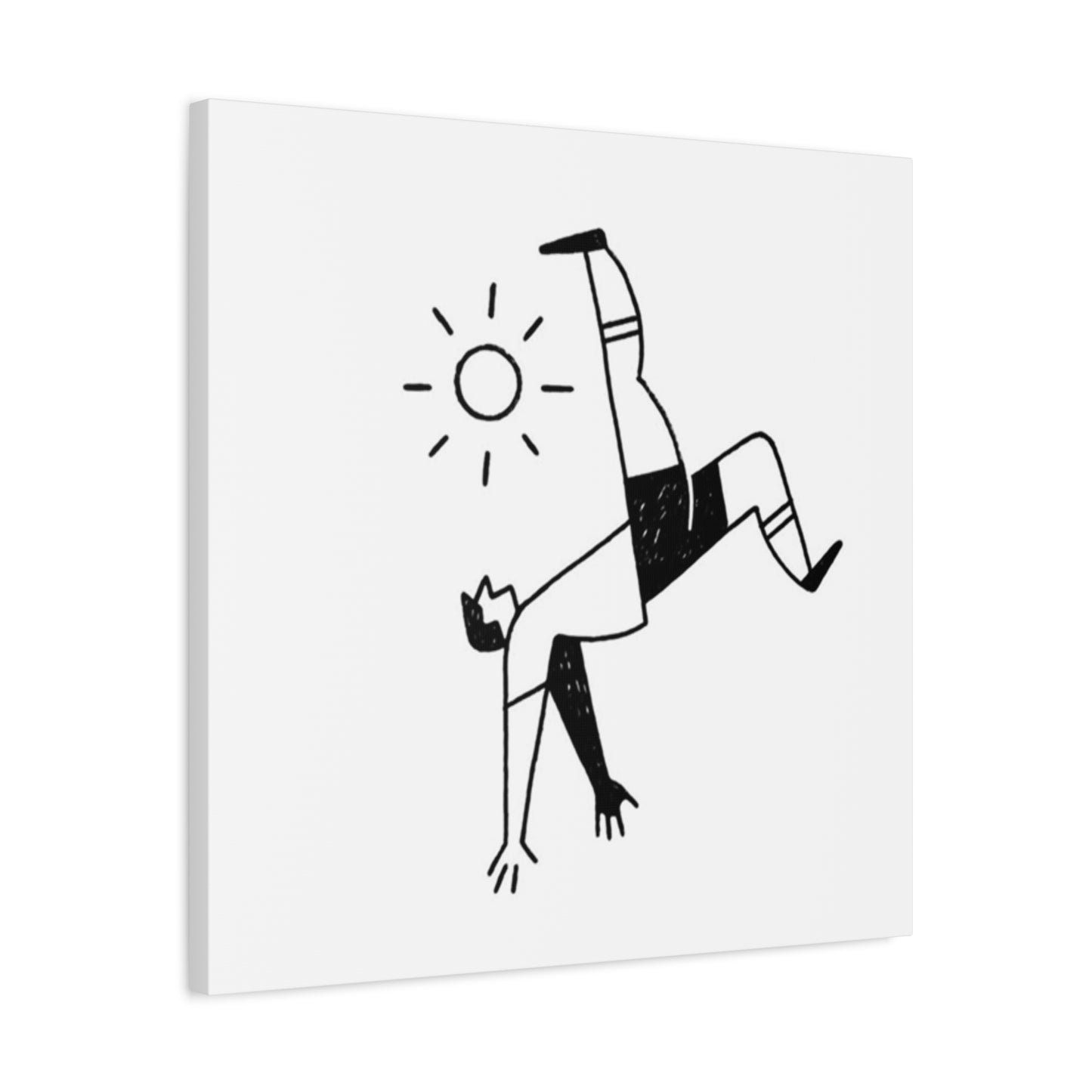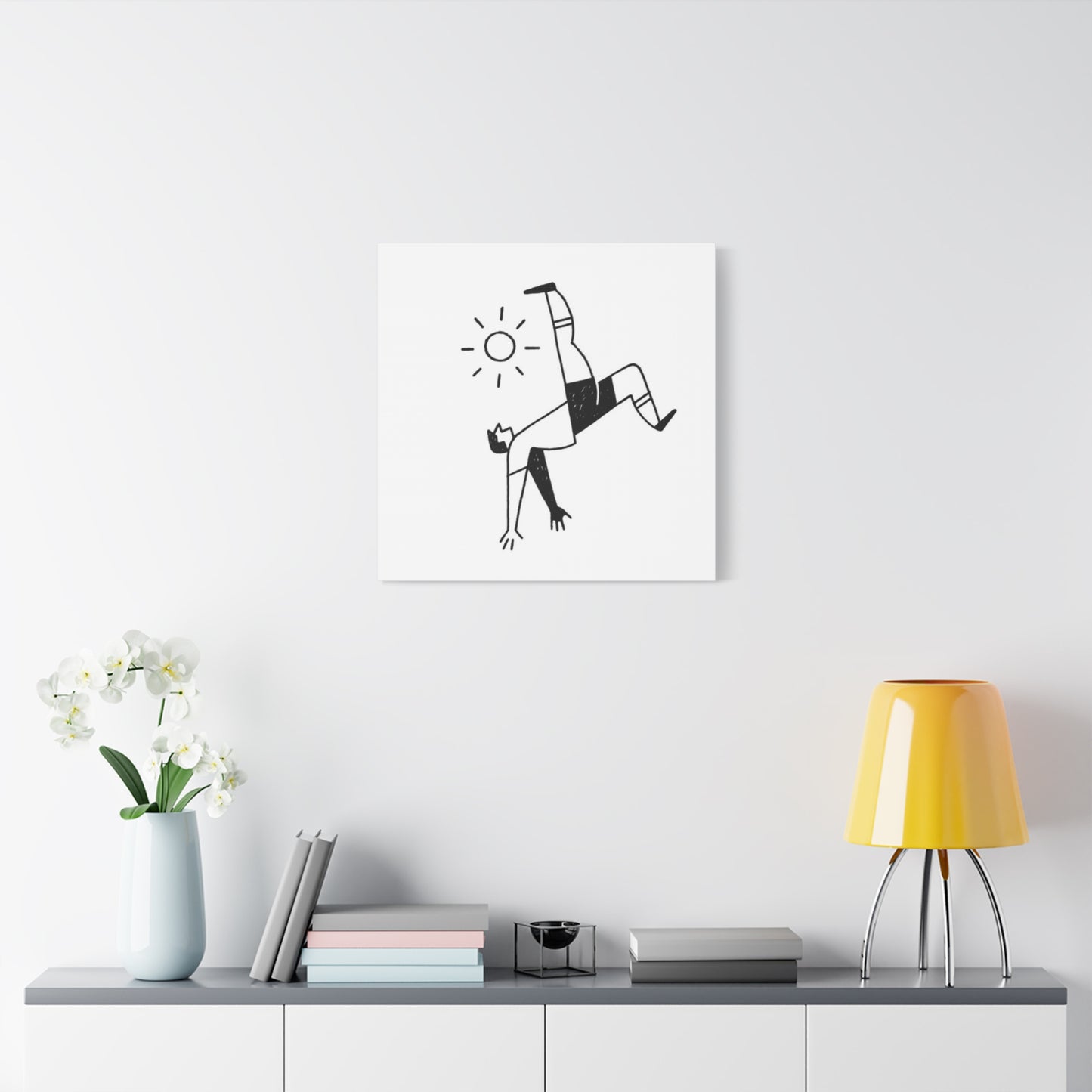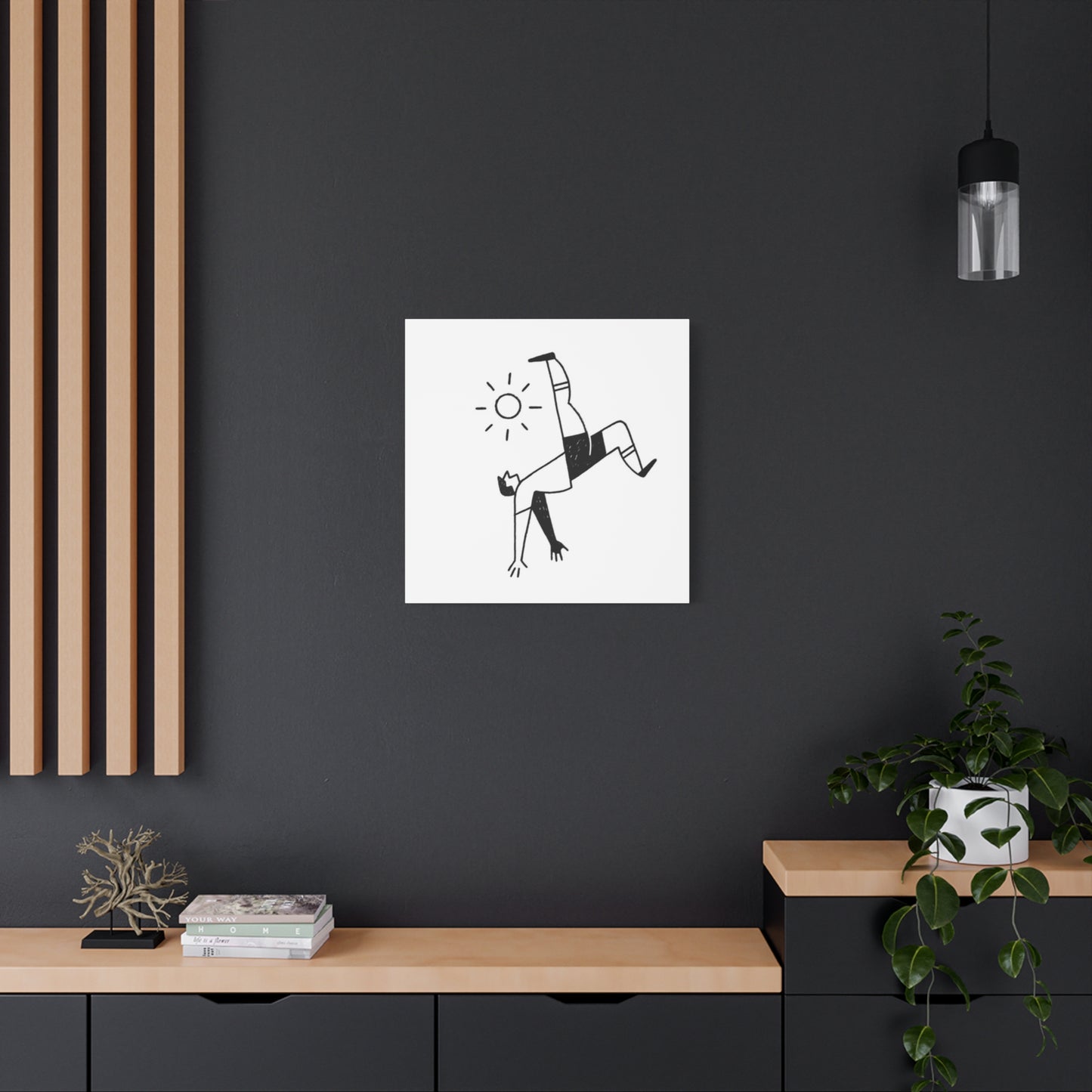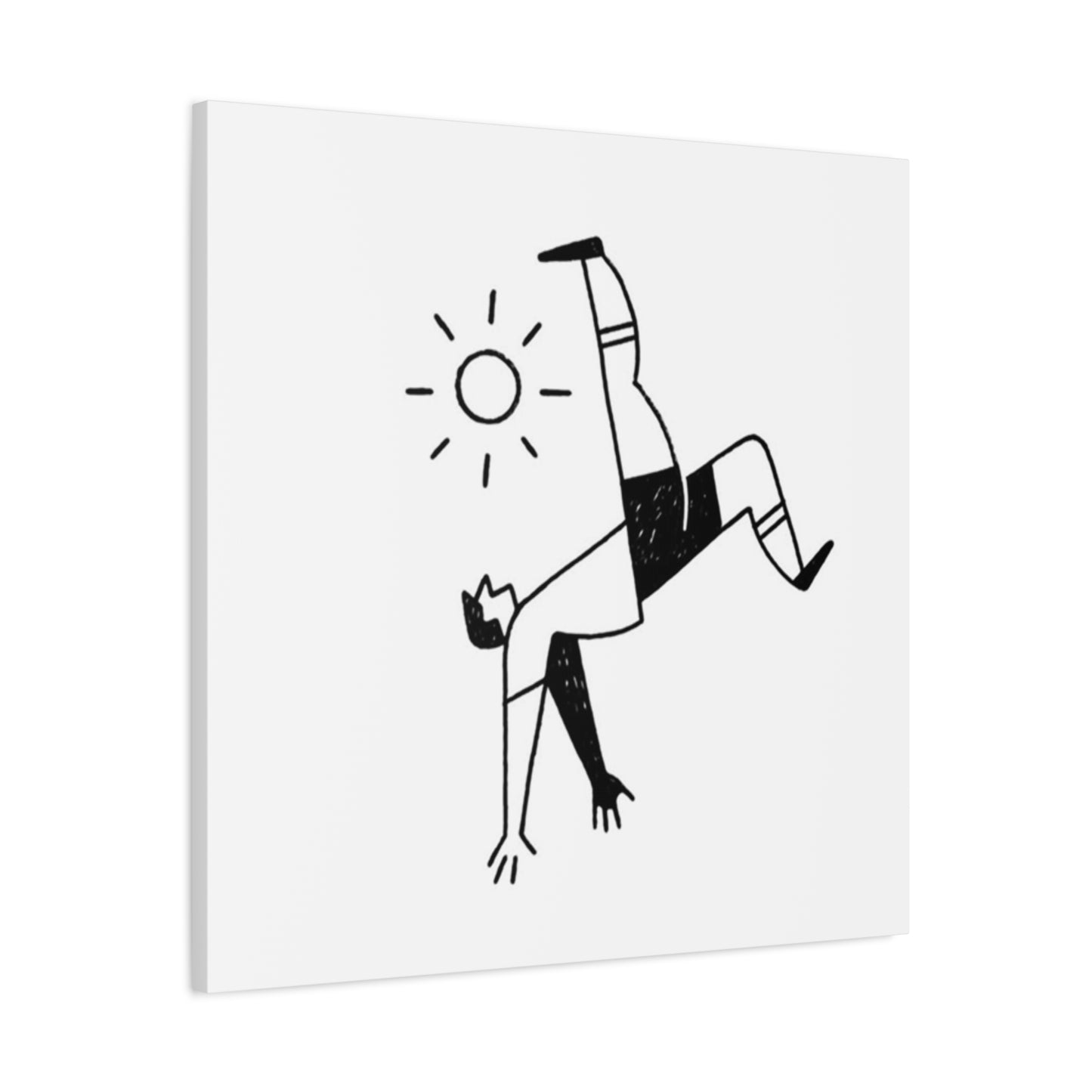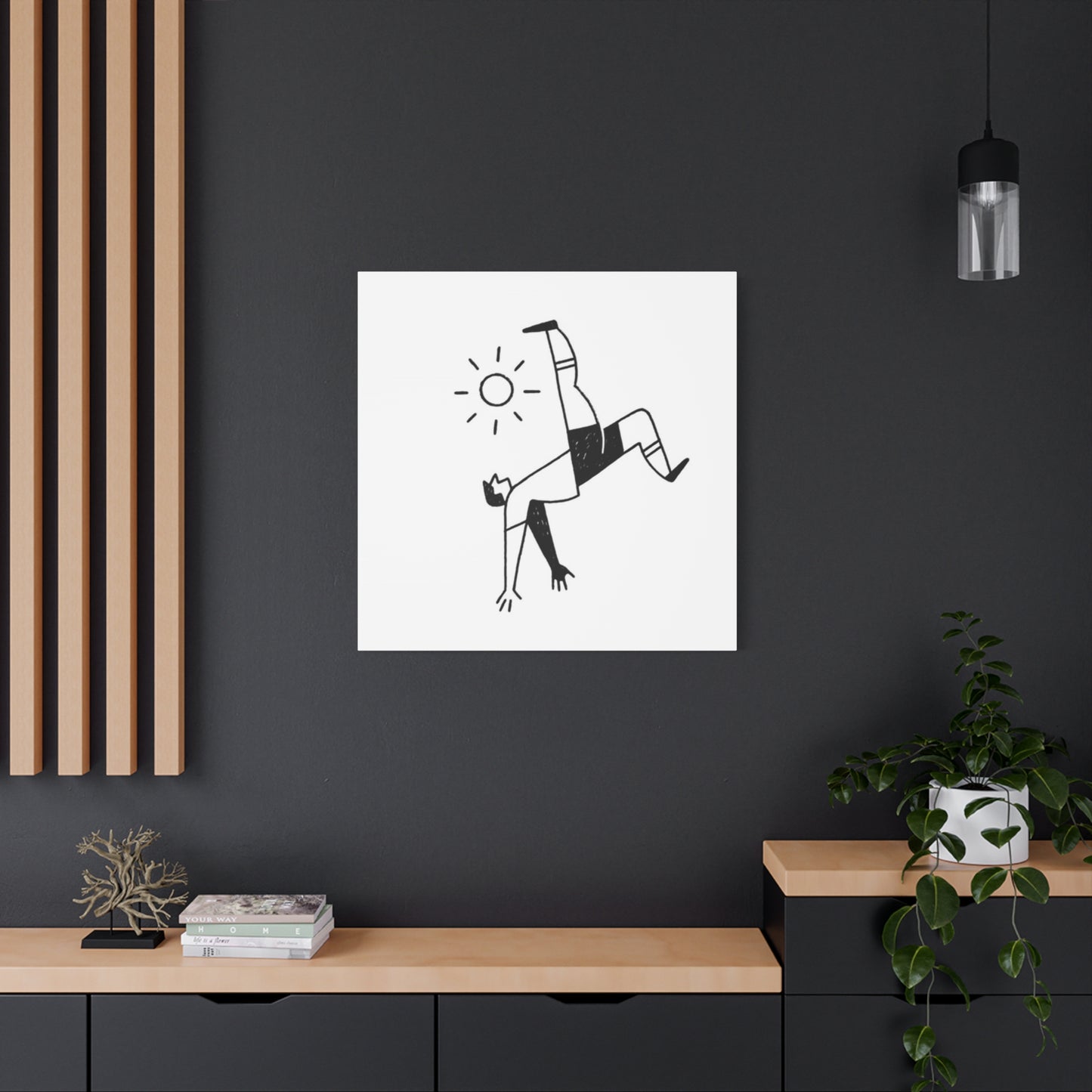Mastering Movement: The Art Behind Soccer Reverse Kick Drawing Wall Art
The world of sports-inspired interior design has witnessed a remarkable transformation in recent years, with one particular element capturing the imagination of enthusiasts and art collectors alike. The acrobatic maneuver that has become synonymous with excellence in the beautiful game now graces walls across homes, offices, and recreational spaces worldwide. This extraordinary movement, frozen in time through various artistic mediums, represents not merely athletic prowess but embodies the poetry of motion itself.
When athletes execute this gravity-defying technique, they create a moment that transcends sport itself, becoming a testament to human capability and artistic expression. The translation of this spectacular athletic achievement into visual art forms has opened new avenues for celebrating passion, dedication, and the pure aesthetics of movement. Through carefully crafted illustrations, sketches, and artistic interpretations, these pieces transform ordinary spaces into galleries that honor both athleticism and creativity.
The intersection of sports and art has always existed, yet the contemporary approach to depicting this particular maneuver has evolved into something profoundly sophisticated. Artists now employ various techniques, from traditional sketching methods to modern digital interpretations, each bringing unique perspectives to how we visualize and appreciate this iconic moment. The growing popularity of such artwork reflects a broader cultural appreciation for sports aesthetics and the desire to incorporate dynamic energy into living spaces.
Celebrating Athletic Excellence Through Visual Representation
The magnificence of witnessing an athlete launch themselves backward into the air, body arched perfectly as their foot makes contact with the ball, creates an indelible image in the minds of spectators. This singular moment of athletic perfection has inspired countless artists to capture its essence through various mediums. The challenge lies not merely in depicting the physical position but in conveying the energy, tension, and explosive power that characterize this maneuver.
Artists who specialize in sports-themed creations understand that their work must communicate multiple layers of meaning simultaneously. The physical mechanics of the movement, the emotional intensity of the moment, and the aesthetic beauty of the human form in motion all converge in these representations. When executed skillfully, such artwork transcends mere documentation and becomes a celebration of human potential and artistic vision working in harmony.
The process of translating athletic movement into static visual form requires deep understanding of both anatomy and dynamics. Artists must consider weight distribution, muscle tension, spatial relationships, and the trajectory of motion. Every line drawn, every shadow placed, contributes to the overall impression of movement frozen at its most critical juncture. This delicate balance between technical accuracy and artistic interpretation separates exceptional pieces from ordinary sports memorabilia.
Contemporary artists working in this genre often spend considerable time studying actual footage of these maneuvers, analyzing the precise positioning of limbs, the angle of approach, and the follow-through motion. This dedication to authenticity ensures that their finished works resonate with true enthusiasts who recognize proper form and technique. However, the best pieces also incorporate elements of stylization and creative interpretation that elevate them beyond simple replication.
The emotional impact of these artistic representations cannot be overstated. For fans of the sport, such artwork serves as a constant reminder of moments that defined matches, seasons, or entire careers. The visual presence of these pieces in living spaces creates an atmosphere of excitement and inspiration, motivating viewers to pursue their own excellence. Whether displayed in personal homes, athletic facilities, or commercial spaces, these works generate conversation and admiration.
Transforming Game-Changing Moments Into Lasting Visual Impact
Throughout the history of the beautiful game, certain executions of this spectacular technique have achieved legendary status. Artists drawing inspiration from these historic moments face the unique challenge of capturing not just the physical action but the context and significance that made them memorable. The artistic interpretation must somehow convey the stakes of the moment, the skill required, and the impact on spectators worldwide.
When creating artwork based on specific famous instances of this maneuver, artists often incorporate subtle elements that reference the broader context without explicitly depicting it. The angle of the player's body might suggest the height of the cross received, while the intensity captured in simplified facial features or body tension hints at the importance of the situation. These nuanced details transform a simple action depiction into a narrative piece that tells a complete story.
The versatility of this subject matter allows for countless artistic approaches. Some creators prefer hyper-realistic renderings that capture every muscle fiber and facial expression, while others embrace abstraction, reducing the form to its essential lines and shapes. Both approaches have merit and appeal to different audiences. The realistic style satisfies those who appreciate technical skill and faithful representation, while abstract interpretations attract viewers who value conceptual art and minimalist aesthetics.
Color choices play a crucial role in how these pieces impact their environment. While some artists opt for monochromatic schemes that emphasize form and shadow, others incorporate vibrant hues that inject energy and excitement into the composition. The decision often depends on the intended placement of the artwork and the emotional tone the creator wishes to establish. Bold colors can energize a space, while subdued palettes create sophistication and timeless appeal.
Texture also contributes significantly to the overall effect of these artworks. Whether achieved through brush strokes in traditional painting, line weight variation in drawings, or printing techniques in reproductions, texture adds depth and visual interest. It invites closer examination and creates a more engaging viewing experience. The interplay between smooth and rough areas can direct the viewer's eye through the composition, ensuring that the focal point receives appropriate attention.
The scale of these pieces significantly affects their impact within a space. Large-format works create commanding focal points that dominate their surroundings, making bold statements about the owner's passions and aesthetic preferences. Smaller pieces offer versatility in placement and can be grouped with other works to create gallery walls that tell broader stories about sports, achievement, or personal interests. The decision regarding size should consider both the available space and the desired emotional effect.
Artistic Techniques That Bring Movement to Life
The challenge of depicting motion in a static medium has occupied artists for centuries, and those working with sports subjects have developed sophisticated techniques to suggest dynamism and energy. Through careful manipulation of composition, line work, and visual flow, skilled creators can make viewers feel the movement despite its frozen state. This illusion of motion represents one of the highest achievements in representational art.
Linear perspective plays a fundamental role in creating the sensation of three-dimensional space and movement within two-dimensional artwork. Artists carefully construct sight lines that draw the eye through the composition, following the arc of the athlete's movement. The positioning of the figure within the picture plane, combined with strategic use of foreshortening, creates depth and makes the viewer feel present at the moment of action.
The treatment of backgrounds in these pieces varies widely based on artistic intent and style preferences. Some creators opt for detailed stadium settings that ground the action in recognizable contexts, while others prefer minimalist or completely abstract backgrounds that focus attention solely on the figure. Negative space becomes a powerful tool in these compositions, allowing the dynamic form to breathe and preventing visual clutter that might diminish impact.
Gesture drawing principles inform much of the strongest work in this genre. Rather than laboring over minute details from the outset, accomplished artists capture the essential gesture and energy of the pose before refining specifics. This approach ensures that the finished piece retains vitality and doesn't become stiff or overworked. The spontaneity preserved through this method communicates authenticity and captures something of the split-second nature of the actual athletic feat.
Shadow and highlight placement serves dual purposes in these compositions. Beyond describing form and creating dimensionality, strategic lighting choices can dramatically enhance the sense of drama and importance. Dramatic side lighting might emphasize the sculptural quality of the athletic physique, while backlighting can create striking silhouettes that reduce the form to its most essential elements. These lighting decisions profoundly affect the mood and message of the artwork.
Contemporary digital tools have expanded the possibilities for creating and reproducing these artistic interpretations. Artists can experiment with compositions, adjust proportions, and explore color variations with unprecedented ease. However, the best digital work still relies on the same fundamental principles of design, composition, and visual communication that have guided artists throughout history. Technology serves as a tool rather than a replacement for skill and vision.
Minimalist Approaches to Maximum Impact
In recent years, a particular aesthetic approach has gained tremendous popularity among those seeking to incorporate sports-themed art into contemporary interiors. This style embraces simplicity, reducing complex movements to their essential linear components. The resulting images possess remarkable power despite, or perhaps because of, their economy of means. This demonstrates that artistic impact need not correlate with complexity or detail.
The philosophy underlying this minimalist approach recognizes that the human eye and mind can construct complete narratives from limited visual information. By providing just enough detail to suggest the form and action, artists engage viewers' imaginations, making them active participants in completing the image. This psychological engagement creates deeper connections between viewer and artwork than might be achieved through exhaustive detail.
Line quality becomes paramount in minimalist interpretations. Each stroke must carry significant weight, as there are fewer elements to convey the complete idea. Artists working in this mode develop exceptional control over their tools, whether traditional pens and brushes or digital drawing implements. The confidence evident in clean, decisive lines communicates mastery and intentionality that viewers instinctively recognize and appreciate.
The absence of color in many minimalist pieces shifts focus entirely to form, composition, and the elegant economy of expression. Black lines on white backgrounds create high contrast that reads clearly from distance while rewarding close examination with subtle variations in line weight and character. This versatility makes such pieces appropriate for diverse interior design schemes, as they complement rather than compete with surrounding colors and patterns.
Negative space assumes extraordinary importance in minimalist sports art. The empty areas around and within the figure become active compositional elements rather than mere background. Skilled artists manipulate these voids to enhance the sense of movement, create visual balance, and direct viewer attention. The relationship between drawn elements and empty space generates tension and energy that enliven the entire composition.
Minimalist sports artwork demonstrates particular effectiveness in modern and contemporary interior settings. The clean lines and uncluttered aesthetic align perfectly with architectural preferences for open spaces, neutral color palettes, and carefully curated decorative elements. These pieces add visual interest and personal expression without overwhelming spaces designed around principles of simplicity and restraint.
Creating Atmosphere in Recreational Spaces
Dedicated areas for entertainment and leisure within homes benefit enormously from thoughtfully selected decorative elements that reinforce their purpose and character. Artwork depicting athletic achievement naturally enhances spaces designed for watching matches, playing games, or simply gathering with friends who share sporting passions. The visual presence of dynamic sports imagery sets an appropriate tone and creates an environment that celebrates competition and camaraderie.
When selecting pieces for these recreational areas, scale and impact become primary considerations. Large, bold works command attention and serve as conversation starters, while collections of smaller pieces can create gallery-style displays that showcase various aspects of the sport or different artistic interpretations. The arrangement should feel intentional and cohesive, contributing to an overall design scheme rather than appearing haphazard or cluttered.
The interplay between artwork and other design elements in these spaces requires careful consideration. Color palettes should harmonize with furnishings, flooring, and architectural features while allowing the art to maintain prominence. Lighting deserves particular attention, as proper illumination ensures that artwork displays to best advantage and contributes effectively to the room's ambiance. Adjustable lighting systems offer flexibility for different activities and moods.
Personal collections often grow organically over time, with new pieces added as interests evolve and opportunities arise. This gradual accumulation can create wonderfully eclectic displays that reflect the owner's journey as a fan and collector. However, maintaining some degree of stylistic consistency or thematic coherence helps prevent visual chaos. Whether consistency comes through similar artistic styles, matching frames, or coordinated color schemes, some unifying element strengthens the overall presentation.
The psychological impact of surrounding oneself with images of athletic excellence and dynamic movement should not be underestimated. These visual reminders of peak performance and spectacular achievement can inspire viewers to pursue their own goals with greater dedication and enthusiasm. For athletes and fitness enthusiasts, such artwork serves as daily motivation to train harder and reach higher. For casual fans, it maintains connection to the sports they love and the emotions associated with memorable moments.
Interactive elements can enhance recreational spaces beyond static artwork alone. Digital displays showing highlight reels, replica equipment thoughtfully presented, or memorabilia carefully integrated with artistic pieces create multi-dimensional environments that engage visitors on multiple levels. The key lies in maintaining balance so that no single element overwhelms others, and the space retains visual coherence despite its variety.
Silhouette Art and the Power of Simplified Form
Among the various artistic approaches to depicting athletic movement, silhouette treatment holds a special place for its dramatic impact and universal readability. By reducing the figure to a solid shape against a contrasting background, artists eliminate all distracting details and force viewers to focus on the pure form of the movement. This radical simplification can paradoxically increase emotional impact by emphasizing the essential elements that make the action recognizable and powerful.
The history of silhouette art extends back centuries, but its application to sports subjects feels thoroughly contemporary. The technique's inherent limitations become strengths when depicting dynamic movement, as the solid shape emphasizes the overall gesture rather than getting lost in anatomical specifics. The resulting images possess a graphic quality that translates exceptionally well to various applications, from canvas prints to wall decals to textile designs.
Creating effective silhouette artwork requires deep understanding of the subject matter. The artist must identify the most characteristic and recognizable pose within the sequence of movement, as this single frozen moment must communicate the entire action. Body angles, limb positions, and spatial relationships all contribute to whether the silhouette reads clearly and conveys the intended sense of dynamic motion. Subtle adjustments to proportions or positions can mean the difference between an ambiguous shape and an instantly recognizable figure.
Color relationships in silhouette work dramatically affect its impact and versatility. The classic black-on-white combination offers maximum contrast and timeless appeal, suitable for nearly any interior. Reversing to white-on-black creates a more dramatic, sophisticated feel appropriate for modern spaces with darker color schemes. Introducing colors beyond simple monochrome opens additional possibilities, though care must be taken to maintain sufficient contrast for the silhouette to read clearly.
Background treatments in silhouette compositions range from completely plain to subtly textured or even incorporating abstract elements that suggest context without adding representational detail. A gradient background might imply sky and field, while geometric shapes could reference stadium architecture or crowd patterns. These additions must enhance rather than compete with the primary silhouette, maintaining the essential clarity that gives this approach its power.
Multiple silhouettes can be combined in single compositions to show progression of movement or create rhythmic patterns that emphasize the athletic action's repetitive or cyclical nature. These sequential arrangements have roots in early motion photography and connect sports art to broader traditions of depicting movement in visual media. The repetition creates visual interest while reinforcing the idea of motion through space and time.
The adaptability of silhouette designs makes them particularly valuable for coordinated decorating schemes. The same core design can be reproduced at various scales and in different colorways to create cohesive looks across multiple rooms or throughout a single large space. This consistency helps unify spaces while the dramatic imagery maintains visual interest and prevents monotony.
From Historic Moments to Timeless Decoration
Certain executions of this spectacular technique have achieved such iconic status that they transcend their original sporting contexts to become cultural touchstones. When artists reference these specific moments through their work, they tap into collective memory and shared emotional experiences. The artwork becomes not just decoration but a portal to memories and feelings associated with those historic occasions.
The challenge in creating artwork based on specific famous instances lies in balancing recognizability with artistic interpretation. Too literal a reproduction risks appearing as mere copying rather than creative work, while excessive abstraction might lose the connection to the source moment. Successful pieces find the middle ground where knowledgeable viewers recognize the reference while the work stands on its own artistic merits.
For those who witnessed particular legendary moments live or through broadcast, artwork depicting those scenes holds special personal significance. It serves as tangible connection to powerful emotional experiences, recalling exactly where they were and what they felt when history unfolded. This emotional resonance makes such pieces far more than decorative objects; they become cherished possessions imbued with personal meaning.
Artists working with these historic subjects often conduct extensive research to ensure accuracy in the details that matter most to devoted fans. The specific stadium, the condition of the field, the style of uniform worn, even the ball design all contribute to authenticity. While artistic license may be taken with some elements, getting the crucial details right demonstrates respect for the source material and the fans who treasure those moments.
The decision to depict specific famous instances versus generic athletic action represents an important choice with different advantages. Named moments carry built-in emotional weight and recognition but may have limited appeal to those unfamiliar with them. Generic representations have broader applicability and allow viewers to project their own favorite moments onto the image. Many artists create both types to serve different market segments and purposes.
Anniversary commemorations of legendary goals often spark renewed interest in related artwork. These milestone occasions remind fans of historic moments and prompt desire to celebrate or memorialize them. Artists who maintain relevant work in their portfolios can benefit from these cyclical surges in attention, while new creators might develop pieces specifically to coincide with anniversary dates.
The evolution of artistic interpretations of famous moments over time provides fascinating insight into changing aesthetic preferences and cultural attitudes. Early depictions might emphasize realism and documentation, while later versions could experiment with abstraction, minimalism, or incorporation of contemporary design trends. Comparing these different approaches reveals much about both art history and sports culture evolution.
Canvas Presentations That Command Attention
The choice of medium and substrate significantly affects how artwork presents and integrates into interior spaces. Traditional canvas prints offer particular advantages for sports-themed pieces, combining substantial presence with practical durability. The texture of canvas adds dimensionality that enhances the viewing experience, while its association with fine art elevates sports imagery beyond mere poster status.
Gallery-wrapped canvas, where the image extends around the edges of the stretcher frame, creates a finished appearance that requires no additional framing. This presentation style suits contemporary interiors and allows the artwork to make maximum impact without visual interruption from frame elements. The three-dimensional object quality of wrapped canvas gives it stronger physical presence than flat prints behind glass.
Size selection for canvas pieces requires careful consideration of available wall space and the desired impact level. Large-scale works create dramatic focal points that anchor entire rooms, while medium-sized pieces offer versatility in placement and integration with other decorative elements. The viewing distance should factor into size decisions; pieces meant to be seen primarily from across a room can be larger than those positioned where viewers will stand close.
The quality of canvas printing technology has advanced remarkably in recent years, allowing faithful reproduction of original artwork with exceptional color accuracy and detail resolution. Archival inks ensure longevity, preventing the fading and color shift that plagued earlier printing methods. This durability makes canvas prints suitable for spaces with varying light conditions, though direct sunlight should still be avoided to maximize lifespan.
Textural effects possible with canvas presentations add another dimension to the artwork. Some printing processes can replicate brush stroke textures or other surface qualities that enhance the hand-crafted feel of the piece. These tactile elements reward close viewing and create more engaging experiences than perfectly smooth prints might offer. The subtle dimensionality catches and reflects light in interesting ways that activate the surface.
Multiple canvas panels arranged in diptych or triptych configurations create opportunities for more complex compositions and larger overall presentations. The divisions between panels can emphasize sequential movement or create intentional visual rhythm. These multi-panel arrangements add sophistication and scale while maintaining manageable individual panel sizes for easier handling and installation.
Custom canvas printing services enable fans and collectors to transform their own favorite images into gallery-quality wall art. This accessibility has democratized art collection, allowing anyone to curate personal galleries featuring exactly the subjects and styles that resonate with them. The line between commercial art products and personalized creative expression continues to blur in interesting ways.
Linear Expressions of Athletic Motion
Line art represents one of the most elegant and versatile approaches to depicting sports action. By reducing complex forms to carefully selected contours and marks, artists create images that communicate with remarkable efficiency. The deliberate economy of this method focuses attention on essential elements while leaving space for viewer imagination to complete the picture.
The variety of line art styles offers something for every aesthetic preference. Continuous line drawings, where the artist never lifts pen from paper, possess a fluid spontaneity that mirrors the continuous nature of athletic movement. Cross-hatching techniques create dimensionality and shadow through accumulated marks, while varied line weights guide the eye and establish visual hierarchy within the composition.
Technical pen work produces precise, consistent lines ideal for architectural or mechanical subjects, but when applied to organic forms like the human body in motion, it creates interesting tension between rigid medium and fluid subject. This contrast can emphasize the structural elements of athletic movement, revealing the underlying geometry that makes spectacular techniques possible.
Gestural line work, characterized by loose, expressive marks, captures energy and spontaneity that perfectly suits dynamic sports subjects. These drawings often appear to have been created quickly, though skilled artists may spend considerable time achieving the desired balance between control and apparent freedom. The resulting pieces communicate immediacy and excitement that more controlled techniques might not achieve.
Digital tools have expanded possibilities for line art creation while maintaining connection to traditional drawing values. Pressure-sensitive tablets allow digital artists to create lines with organic variation in width and opacity, closely mimicking traditional pen and brush work. The undo function and layer systems reduce risk and enable experimentation, though the best digital line art still exhibits the confidence and intentionality of strong traditional drawing.
Combining line work with selective color application creates dynamic hybrid styles that leverage the clarity of linear structure while adding emotional impact through strategic color use. A monochromatic line drawing might feature a single accent color highlighting the ball or shoes, drawing attention to critical elements while maintaining overall simplicity. These judicious color choices enhance rather than overwhelm the essential line work.
The reproducibility of line art through various printing methods makes it accessible across price points and applications. The same drawing can appear as an affordable poster, a limited edition print, or incorporated into merchandise ranging from apparel to accessories. This versatility helps artists reach broader audiences while maintaining consistent visual branding across their work.
Modern Spaces Embracing Athletic Aesthetics
Contemporary interior design increasingly incorporates unexpected elements, blending high and low cultural references in eclectic yet cohesive spaces. Sports imagery has moved beyond traditional basement recreation rooms to appear in sophisticated living areas, bedrooms, home offices, and even formal dining spaces. This evolution reflects broader acceptance of personal passion as valid design inspiration regardless of subject matter.
The key to successfully integrating sports art into refined spaces lies in selection and presentation. Carefully chosen pieces with strong artistic merit display as confidently as any abstract expressionist painting or landscape photograph. Quality framing, proper lighting, and thoughtful placement signal that the work deserves serious consideration rather than dismissal as mere fan memorabilia.
Color coordination between artwork and surrounding decor creates visual harmony that allows sports pieces to coexist comfortably with other design elements. A predominately neutral palette might be energized by a single vibrant sports print, or conversely, colorful furnishings might be grounded by monochromatic athletic artwork. The principles remain the same regardless of subject matter; good design requires attention to relationships between all elements in a space.
Mixing sports artwork with pieces from other genres creates layered, interesting environments that reflect multifaceted personalities. A sports illustration might hang alongside landscape photography and abstract paintings in a gallery wall arrangement, with connections created through consistent framing, similar color palettes, or complementary compositional structures. This curatorial approach elevates all pieces through association and demonstrates sophisticated taste.
Architectural features like built-in shelving, alcoves, or accent walls provide natural opportunities for displaying sports art in ways that feel integrated rather than afterthought additions. Backlighting can transform canvases into glowing focal points, while picture ledges allow for easy rotation of pieces to keep the environment fresh and responsive to changing moods or seasons.
The scale and proportion relationships between artwork and furniture play crucial roles in creating balanced, professional-looking rooms. Pieces hung above sofas or beds should generally span roughly two-thirds to three-quarters of the furniture width, creating visual connection without overwhelming the arrangement. Multiple smaller pieces can be grouped to achieve appropriate overall dimensions while adding complexity and interest.
Professional interior designers increasingly recognize that incorporating clients' genuine passions and interests, including sports fandom, creates more successful and satisfying spaces than imposing impersonal decorator showroom aesthetics. Homes should reflect the people who inhabit them, and artwork depicting beloved sports creates emotional connections that generic decoration cannot match. The authenticity of personal passion produces warmth and character that makes spaces truly feel like homes.
Simplicity as Powerful Statement
In a world of increasing visual complexity and information overload, artwork that communicates through minimal means offers relief and clarity. Simple drawings distilled to essential elements demonstrate that powerful impact requires neither complexity nor extensive detail. This reductive approach aligns with broader minimalist movements in design, architecture, and lifestyle philosophy that value quality over quantity and meaning over excess.
The discipline required to create effective minimalist sports art should not be underestimated. Determining which elements must be included for recognizability and which can be eliminated without losing meaning requires deep understanding of both subject and medium. Every line, shape, or mark that remains must justify its presence through contribution to the overall effect. This editing process resembles sculpture, removing everything that doesn't serve the vision.
The accessibility of minimalist sports imagery contributes to its broad appeal. Viewers need not possess specialized knowledge or refined aesthetic sensibilities to appreciate these pieces. The directness of communication crosses cultural and educational boundaries, making the artwork universally relatable. This democratic quality contrasts with more obscure contemporary art that may require explanation or context to understand.
Despite their apparent simplicity, the best minimalist pieces reveal new details and nuances upon repeated viewing. The relationships between elements, the quality of line work, the balance of positive and negative space all reward sustained attention. This depth within simplicity provides longevity; pieces continue to engage rather than becoming invisible through overfamiliarity.
Minimalist sports art adapts beautifully to contemporary digital sharing and social media culture. The clean graphics read clearly on small screens, and the lack of fine detail means nothing is lost in scaled-down reproduction. These pieces function effectively as profile images, headers, or decorative elements in digital spaces, extending their reach far beyond physical wall art applications.
The affordability of producing minimalist designs makes them accessible to wider audiences than elaborate, detailed works might be. Without requiring hours of meticulous rendering, artists can create strong pieces more quickly, allowing lower price points without compromising their compensation. This economic accessibility helps more people incorporate meaningful art into their lives rather than settling for mass-produced generic decoration.
The timeless quality of well-executed minimalist design ensures these pieces won't appear dated as trends change. While highly detailed realistic renderings or pieces incorporating current graphic design fads may eventually look tied to specific periods, classic simplicity transcends temporal associations. An elegant line drawing created today could as easily have been made decades ago or might remain current decades hence.
Honoring Legendary Moments Through Visual Tribute
Throughout the history of the beautiful game, certain goals achieved through this spectacular technique have burned themselves into collective consciousness. These moments transcend their immediate context to become part of broader cultural mythology. Artistic representations of these historic achievements serve as tribute to both the athletes who executed them and the generations of fans whose lives they touched.
The emotional weight carried by artwork depicting specific famous moments can be extraordinary. For those who witnessed these events, the images instantly transport them back to exact locations and feelings experienced when history occurred. Even for those too young to have seen the original moments, the images connect them to heritage and tradition, linking them to larger communities of fans across time.
Creating artwork worthy of these legendary subjects requires artists to bring their absolute best efforts. The significance of the source material demands excellence in execution; anything less feels disrespectful to the achievement being commemorated. This pressure can inspire artists to transcend their normal capabilities, producing works that stand among their finest accomplishments.
Different artistic styles bring varying perspectives to historic moments. Photorealistic renderings emphasize documentation and preservation, creating visual records that capture every detail of the scene. Impressionistic approaches might focus on the energy and emotion of the moment, while abstract interpretations could explore the philosophical or symbolic meanings beyond the literal event. Each valid approach offers unique insights and appeals to different audiences.
The commercial market for artwork depicting famous moments reflects their enduring appeal and cultural significance. Limited edition prints of iconic scenes can appreciate in value over time, particularly when created by recognized artists or released in conjunction with milestone anniversaries. This collector interest validates sports art as legitimate investment category beyond its decorative and emotional value.
Educational applications of sports art depicting historic moments provide engaging entry points for teaching broader subjects. Discussions of specific legendary goals can lead to exploration of cultural history, physics of motion, psychology of peak performance, or economics of professional sports. The concrete visual anchor makes abstract concepts more accessible and memorable for learners of all ages.
The responsibility artists feel when working with legendary subject matter can be both motivating and intimidating. They must balance respect for the source material with their own creative vision, honoring the moment while adding new perspective or interpretation. Success in this balancing act creates works that satisfy both devoted fans seeking authenticity and art lovers valuing creative originality.
Illustrative Excellence Enhancing Living Environments
The distinction between mere decoration and meaningful art often lies in execution quality and emotional resonance rather than subject matter. Sports illustrations created with genuine skill and artistic vision deserve recognition alongside any other genre of visual art. The best examples demonstrate mastery of composition, understanding of anatomy and movement, and ability to evoke emotion through visual means.
Technical proficiency forms the foundation of excellent sports illustration. Artists must understand human anatomy sufficiently to depict bodies in complex positions convincingly, even when stylization is employed. Knowledge of physics and biomechanics ensures that depicted movements appear possible and natural rather than awkward or anatomically impossible. This technical grounding allows confident creative departures that enhance rather than undermine credibility.
Compositional strength separates compelling sports illustrations from ordinary depictions. Dynamic diagonal orientations, strategic use of negative space, carefully considered sight lines, and balanced distribution of visual weight all contribute to images that engage viewers and guide their attention effectively. Strong compositions work intuitively, drawing the eye naturally through the image without requiring conscious analysis of why they succeed.
The ability to convey narrative within a single static image represents advanced artistic skill. The best sports illustrations suggest the moments immediately before and after the frozen instant depicted, creating implied action and temporal depth. Viewers sense the buildup of energy leading to the pictured moment and anticipate the explosive follow-through, experiencing the action sequence mentally despite seeing only one phase.
Color theory application elevates good sports illustration to exceptional levels. Understanding how colors interact, which combinations create harmony or tension, and how hue and saturation affect emotional response allows artists to fine-tune their work's psychological impact. Even in limited palette or monochromatic pieces, the careful selection of values creates mood and directs attention with subtlety and power.
Contemporary sports illustrators often maintain strong social media presences, sharing work-in-progress images, technique demonstrations, and finished pieces with global audiences. This accessibility demystifies the creative process and builds communities of fans and fellow artists. The direct connection between creators and audiences bypasses traditional gatekeepers, allowing talented artists to build careers outside conventional gallery and representation systems.
Commission opportunities enable sports art enthusiasts to acquire completely personalized pieces featuring favorite players, teams, or moments. Working directly with artists to develop custom illustrations creates collaborative creative experiences and results in unique works impossible to obtain through commercial channels. These commissions often become treasured family heirlooms passed down through generations of fans.
Strength and Elegance Unified in Visual Form
The apparent contradiction between power and grace finds perfect resolution in the athletic technique that serves as subject for so much compelling artwork. The explosive strength required to launch one's body backward into the air combines with the precise control needed to accurately contact the ball, creating movements that appear both violent and balletic simultaneously. Capturing this duality challenges artists to convey both aspects convincingly.
The sculptural quality of athletic bodies in motion provides rich subject matter for artists interested in exploring human form. Muscles tensing and extending, weight shifting, spines arching, limbs extending create complex three-dimensional forms that reveal the body's structural and mechanical beauty. Even highly abstracted or simplified artistic interpretations build on understanding of these underlying forms and forces.
The tension inherent in athletic movement creates visual interest that more relaxed poses cannot match. Bodies on the edge of balance, forces barely contained, potential energy about to release into explosive action all communicate drama and excitement. Artists emphasizing these qualities through exaggeration, strategic distortion, or careful rendering of strain and effort heighten emotional impact and viewer engagement.
Comparative studies of different artistic approaches to the same athletic movement reveal fascinating differences in interpretation and emphasis. Where one artist might focus on technical execution perfection, another explores emotional intensity, while a third investigates abstract formal relationships created by the positioned body. These varied perspectives demonstrate that no single correct way exists to depict even highly specific subjects.
The feminine and masculine aesthetics traditionally associated with grace and power respectively find themselves challenged and complicated in sports art. Male athletes demonstrating grace and female athletes exhibiting power contradicts outdated stereotypes, and artwork that captures these qualities honestly contributes to broader cultural conversations about gender, physicality, and capability. The best sports art transcends limiting categories to celebrate human achievement regardless of the athlete's identity.
Historical precedents in fine art for depicting bodies in dynamic motion inform contemporary sports illustration even when artists don't consciously reference these sources. From ancient Greek sculptures of athletes to Renaissance studies of anatomy in motion to futurist paintings of speed and energy, the lineage of movement depiction extends across cultures and centuries. Understanding this history enriches both creation and appreciation of current work.
The universal human fascination with watching skilled bodies perform extraordinary feats explains the enduring appeal of sports art across cultures and throughout history. These images tap into primal responses to displays of capability, triggering admiration and inspiration. This psychological foundation ensures that well-executed sports art will always find appreciative audiences regardless of changing aesthetic trends.
Transforming Recreational Spaces with Dynamic Imagery
Dedicated entertainment areas within homes offer ideal settings for bold, expressive artwork that might feel too casual or energetic for more formal spaces. The relaxed atmosphere of these rooms accommodates pieces that make strong statements and inject personality without concerns about maintaining refined sophistication. Sports imagery particularly suits these environments, reinforcing their purpose and creating immersive thematic experiences.
The psychology of environment design recognizes that surroundings significantly influence mood and behavior. Spaces intended for excitement, competition, and energetic social interaction benefit from visual elements that support and amplify these qualities. Dynamic sports art depicting spectacular athletic feats primes visitors for the activities these rooms are meant to host, setting appropriate emotional tones from the moment people enter.
Lighting design in recreational spaces should accommodate both functional needs during active use and atmospheric requirements when spaces serve as lounges or viewing areas. Artwork lighting deserves specific consideration, ensuring pieces display effectively under various overall lighting conditions. Track lighting or individual picture lights allow highlighting specific works while maintaining flexibility for different room uses and moods.
The integration of technology in modern recreational spaces creates opportunities for hybrid approaches combining traditional static art with digital displays. Large screens can alternate between showing live matches and displaying curated sports art galleries, while physical artwork provides constant visual interest when screens are dark. This combination honors both cutting-edge technology and timeless appeal of physical art objects.
Furniture arrangement in rooms featuring sports art should consider sight lines to artwork from primary seating areas. Major pieces deserve prominent placement where they'll be seen and appreciated, while smaller works might be positioned to reward discovery by those moving through the space. The overall layout should feel cohesive, with furniture, artwork, and other decorative elements working together to create unified environment.
Personal memorabilia and artifacts can be thoughtfully integrated with sports art to create richer, more personalized environments. Signed jerseys, balls, or equipment displayed alongside artistic representations of techniques create dialogue between functional objects and interpretive works. These combinations tell stories about personal connections to sports while maintaining aesthetic coherence through careful curation and presentation.
The flexibility to update and rotate artwork keeps recreational spaces feeling fresh and responsive to current interests. Unlike more formal rooms where changes might disrupt carefully balanced design schemes, these spaces can accommodate seasonal swaps, additions celebrating recent achievements, or complete refreshes as passions evolve. This flexibility makes them ideal proving grounds for experimenting with new pieces before committing them to more permanent placements.
Silhouettes as Inspiration for Action and Achievement
The stark contrast and simplified forms of silhouette artwork create powerful psychological impacts beyond their considerable visual appeal. These images function almost as symbolic representations of athletic ideals rather than depictions of specific individuals, allowing viewers to project themselves into the forms they see. This identificatory quality makes silhouette sports art particularly effective as motivational imagery.
For athletes and fitness enthusiasts, visual reminders of peak performance can significantly influence training motivation and mental preparation. Sports psychologists recognize the power of visualization in achieving goals, and artwork depicting excellent execution of athletic techniques serves as constant prompt for mental rehearsal. The abstraction of silhouettes makes them universal rather than intimidatingly specific, encouraging aspiration without comparison.
Conclusion:
Mastering the intricate movement of the soccer reverse kick is not only a display of athletic skill but also an artistic expression that beautifully captures the essence of the sport. The reverse kick combines precision, timing, and body control, making it one of the most challenging yet visually striking techniques in soccer. Through the lens of wall art, this dynamic movement is immortalized, transforming a fleeting moment of athletic brilliance into a lasting visual masterpiece.
The art behind the reverse kick drawing goes beyond mere representation; it conveys the power, grace, and fluidity inherent in the motion. Each line and curve in the artwork reflects the player’s balance and coordination, inviting viewers to appreciate the harmony between technique and creativity. This form of art brings to life the energy and passion that define soccer, making it accessible to fans and artists alike. It transforms athletic motion into a universal language, evoking emotion and inspiring movement even in stillness.
Moreover, creating wall art centered on the reverse kick encourages a deeper appreciation for the mechanics behind the move. Observers gain insight into the athlete’s mindset—the confidence required to execute such a technique and the countless hours of practice it demands. It is a celebration of dedication, highlighting how physical mastery intertwines with mental focus. Through art, the complexity of the skill becomes more tangible and relatable, inviting people to explore the beauty of human potential.
This artwork also serves as a motivational symbol, inspiring athletes and enthusiasts to push their limits and explore new dimensions of their craft. The reverse kick, once a technical challenge, becomes an emblem of perseverance and innovation. Displaying this art in homes, gyms, or sports facilities fosters a connection to the spirit of soccer, encouraging ongoing learning and growth.
Ultimately, the art of the soccer reverse kick drawing transcends the boundaries between sport and creativity. It captures a moment of mastery and turns it into a timeless tribute to movement, passion, and skill. This fusion of athleticism and art not only celebrates the game but also elevates it, reminding us all of the beauty found in perfecting a single, extraordinary move.





















